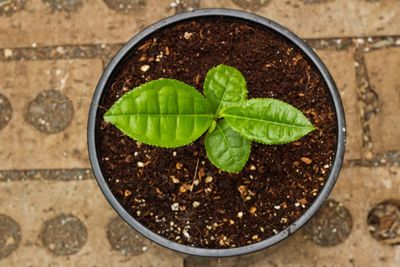About Growing Tea at Home
Tea is grown in 45 countries and is worth billions of dollars to the world’s economy annually. While tea plants are adapted to tropical areas and lowland areas of the subtropics, growing tea plants in pots allows the gardener to control temperatures. Although tea plants are hardy and will generally survive to just under freezing temperatures, they may still be damaged or killed. This means that in cooler climates, tea lovers can grow plants inside provided they give plenty of light and warm temps. Tea plant harvesting is done in the spring with the new flush of leaves. Only the young green leaves are used to make tea. Winter pruning will not only keep the plant a manageable size for containers but engender a new burst of young leaves.
Tea Plant Container Care
Container-grown tea plants should be planted in a pot that is 2 times the size of the root ball with plenty of drainage holes. Fill the bottom third of the pot with well-draining, acidic potting soil. Place the tea plant atop the soil and fill in around it with more soil, leaving the crown of the plant just above the soil. Place the plant in an area with bright, indirect light and with temperatures about 70 F. (21 C.). Keep the plant well watered, but do not allow the roots to become waterlogged. Water until the water runs out of the drainage holes. Allow the soil to drain and don’t let the container sit in water. Let the top few inches (5 to 10 cm.) of soil dry between watering. Fertilize the container-grown tea plant during its active growing season, from spring through fall. At this time, apply an acidic plant fertilizer every 3 weeks, diluted to half the strength according to the manufacturer’s instructions. Prune the tea plant yearly after it blooms. Also, remove any dead or damaged branches. To restrict the height of the plant and/or to facilitate new growth, prune the shrub back by about half its height. If the roots begin to outgrow the container, repot the plant into a larger container or trim the roots to fit the pot. Repot as needed, usually every 2-4 years.
